Pioneering artist Mary Ann Unger died before fame found her. Now her family is taking up her cause.
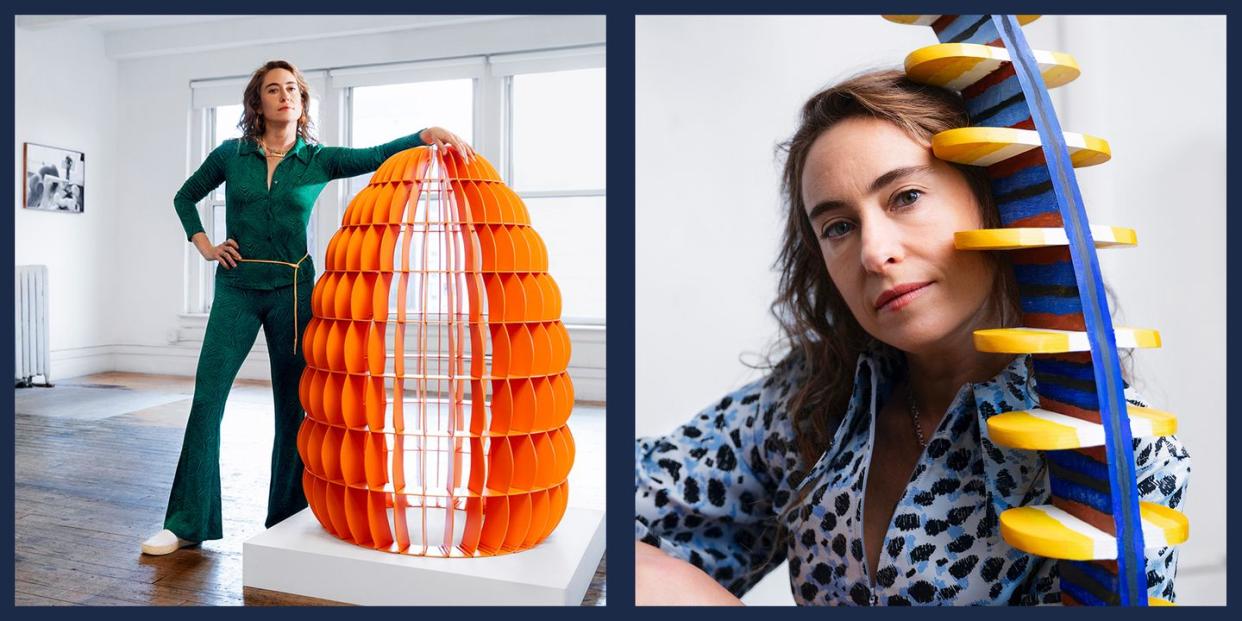
Tragedy often exerts a subtractive centrifugal force on a family, spinning apart and severing the bonds of those who remain. Often, but not always.
Take what happened after the groundbreaking artist Mary Ann Unger died in 1998, leaving behind her husband, the photographer Geoffrey Biddle, and their daughter Eve Biddle, then 16.
“We could have dumpstered everything,” Eve says of the nearly 1,000 artworks that her mother left behind after a 14-year battle with cancer that began when Eve was a toddler. “Looking back, that was in some ways a legitimate option, but it wasn’t for Dad. It wasn’t for me.”
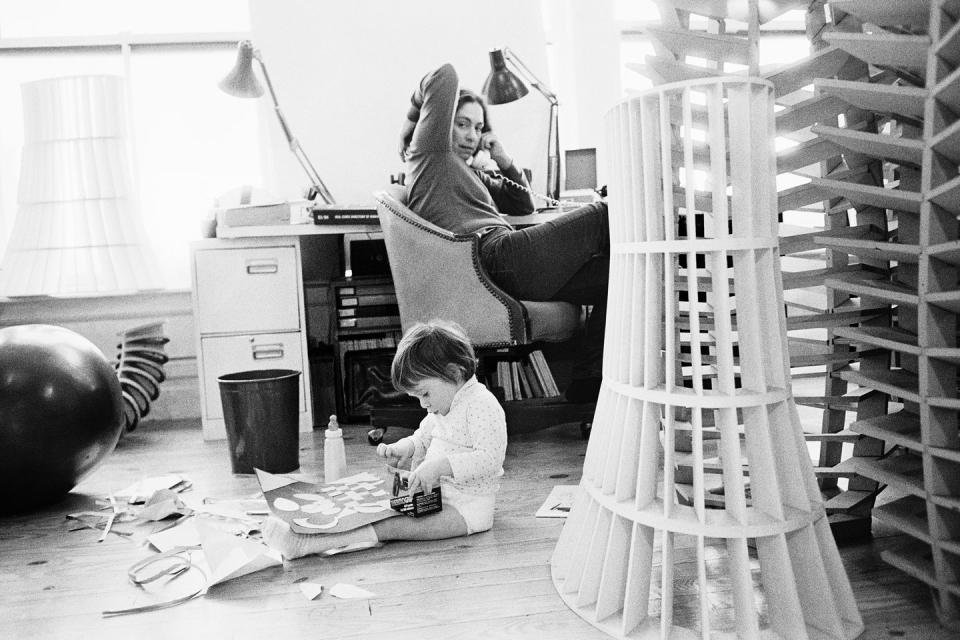
Instead the duo engaged in what Eve calls a “total act of faith” that Mary Ann’s colossal sculptures, patterned watercolors, and delicate drawings “deserve attention in the art historical conversation.”
One such conversation is happening at the Whitney Museum, where Jennie Goldstein has curated "In the Balance: Between Painting and Sculpture 1965–1985," which runs through March 23. The exhibition places Unger in context with peers whose work, like hers, danced between two- and three-dimensionality, such as Judy Chicago, Alma Thomas, and Dorothea Rockburne.
Neither Unger’s inclusion in that show nor the museum’s posthumous acquisition of six of her artworks would have happened if, several years ago, Eve hadn’t invited the Whitney to consider an artist with whose work Goldstein admits she was “unfamiliar.”
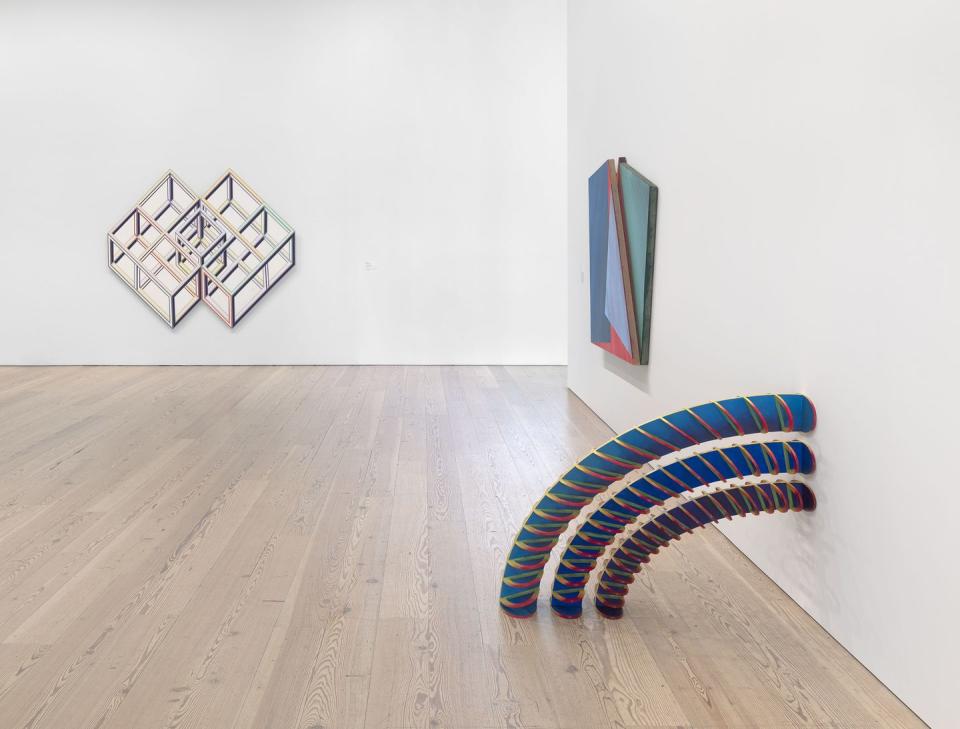
Although Geoffrey, 72, is descended from the Biddle family that shaped colonial American life, he came of age in the 1960s and shrugged off the Biddle mantle to pursue life on his own terms in New York, shuttling between art photography and photojournalism.
He met Unger while working for the Magnum photo agency, and they committed to living together as artists, which took some shrewdness, including finding a dilapidated industrial loft owned by the city in which to work and live and, when the time came, raise a family.
Unger learned to cast bronze, carve marble, and weld, and as a young artist her heroes were Michelangelo, Rodin, Giacometti, and Henry Moore. But she was a pioneering feminist, seen as such particularly for her creation of often abstract sculptures of heroic scale—historically considered male terrain—using methods and materials she devised when steel, bronze, and marble were unaffordable and, later, when she was ill, would have been unwieldy.
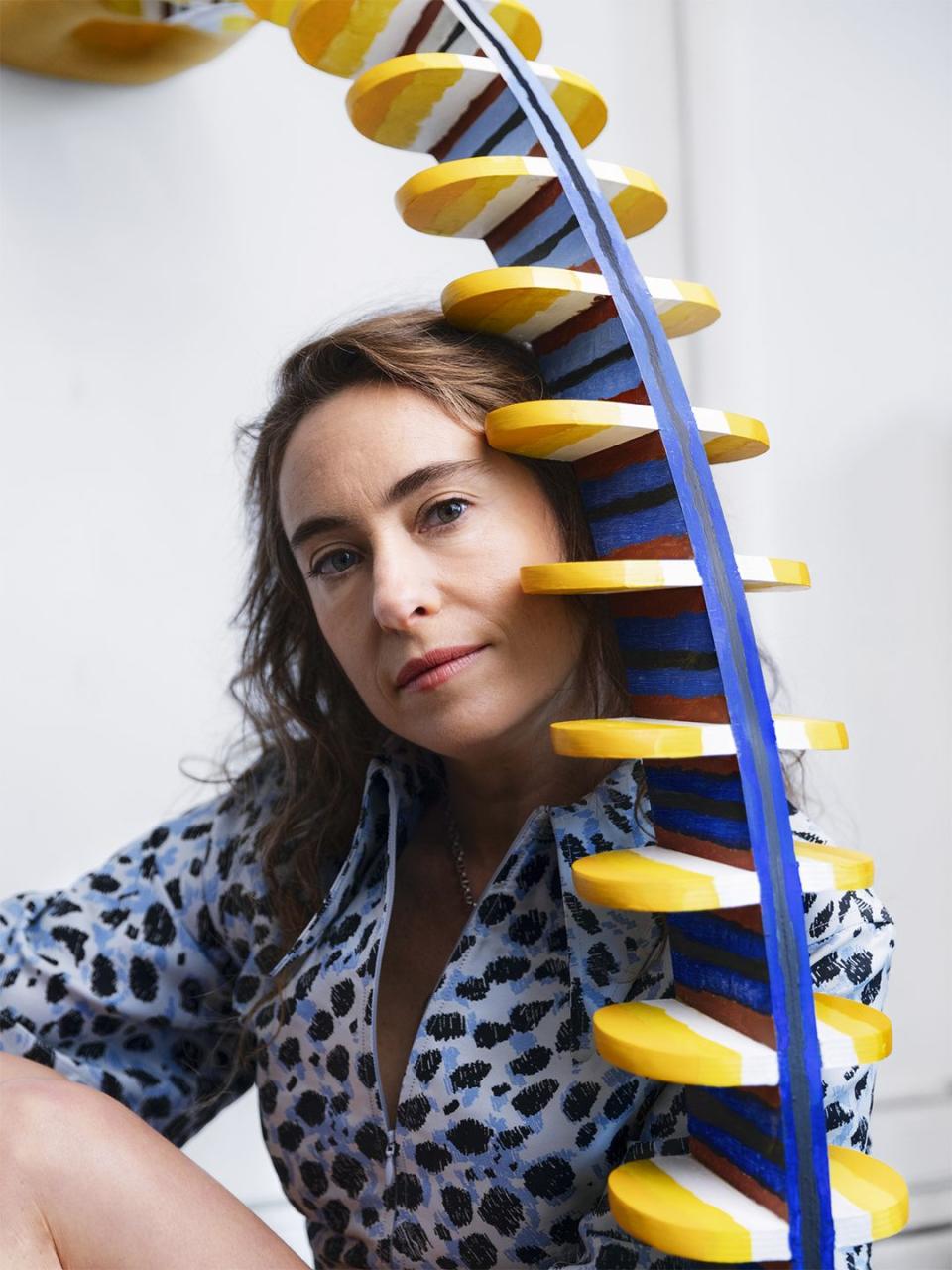
At the loft where Eve grew up, her parents’ studios are gone. Now it’s where a small team guided by Geoffrey and Eve oversees gifts, loans, and the conservation of Unger’s artwork; it also houses exhibitions of work by all three.
Discussing her mother’s career, Eve gestures to the current exhibition “The Sword and the Stone,” which features Unger’s sculptures alongside prints Eve made and an array of family photographs taken by Geoffrey (open by appointment only through this spring). Eve recalls a note she found in her mother’s archive: “50 years old. Still no gallery.” Eve looks away for a second. “Brutal, right?”
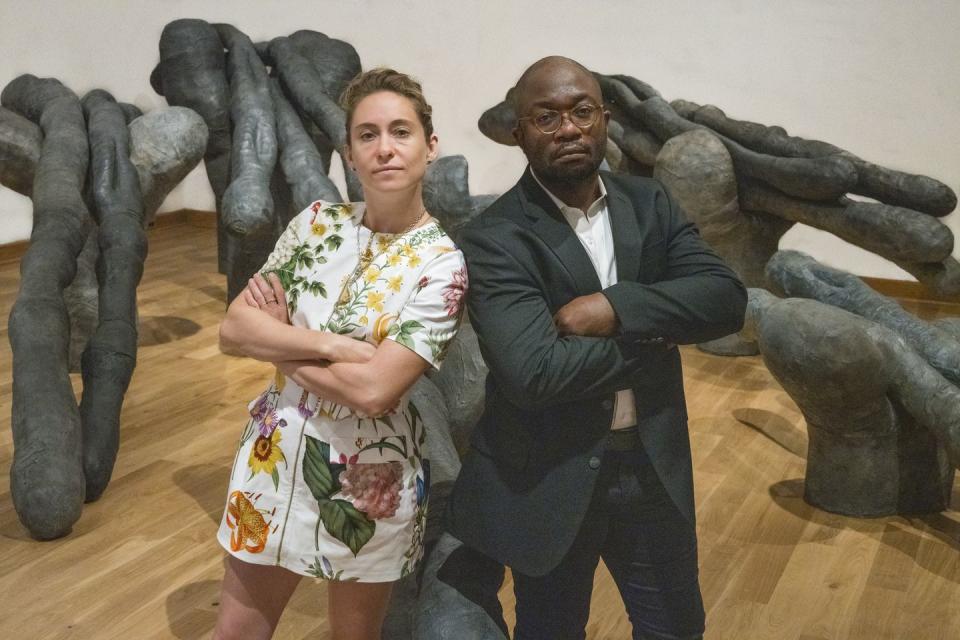
In the catalog for the retrospective of Unger’s work that he curated at the Williams College Museum of Art last year, Horace D. Ballard of Harvard Art Museums asserts that Unger died just as she was poised to soar as one of the 20th century’s great artists. By the 1980s any aspirational artist’s trajectory, he says, would ideally include many of the milestones that Unger’s did. In her case that meant an MFA from Columbia University, shows with various galleries in New York and beyond, nine public art commissions, a stream of fellowships and residencies (most notably a Guggenheim), and inclusion in a handful of important museum collections, like the Brooklyn Museum, the Philadelphia Museum of Art, and the Smithsonian’s Hirshhorn Museum. (Today, thanks largely to Geoffrey and Eve, Unger’s work is in the collections of more than 20 museums.)
Because Unger’s illness stretched on so long, with many “gaps for rest, treatment, and family time,” as Ballard puts it, she never enjoyed steadfast gallery representation and the stability such support can bring.
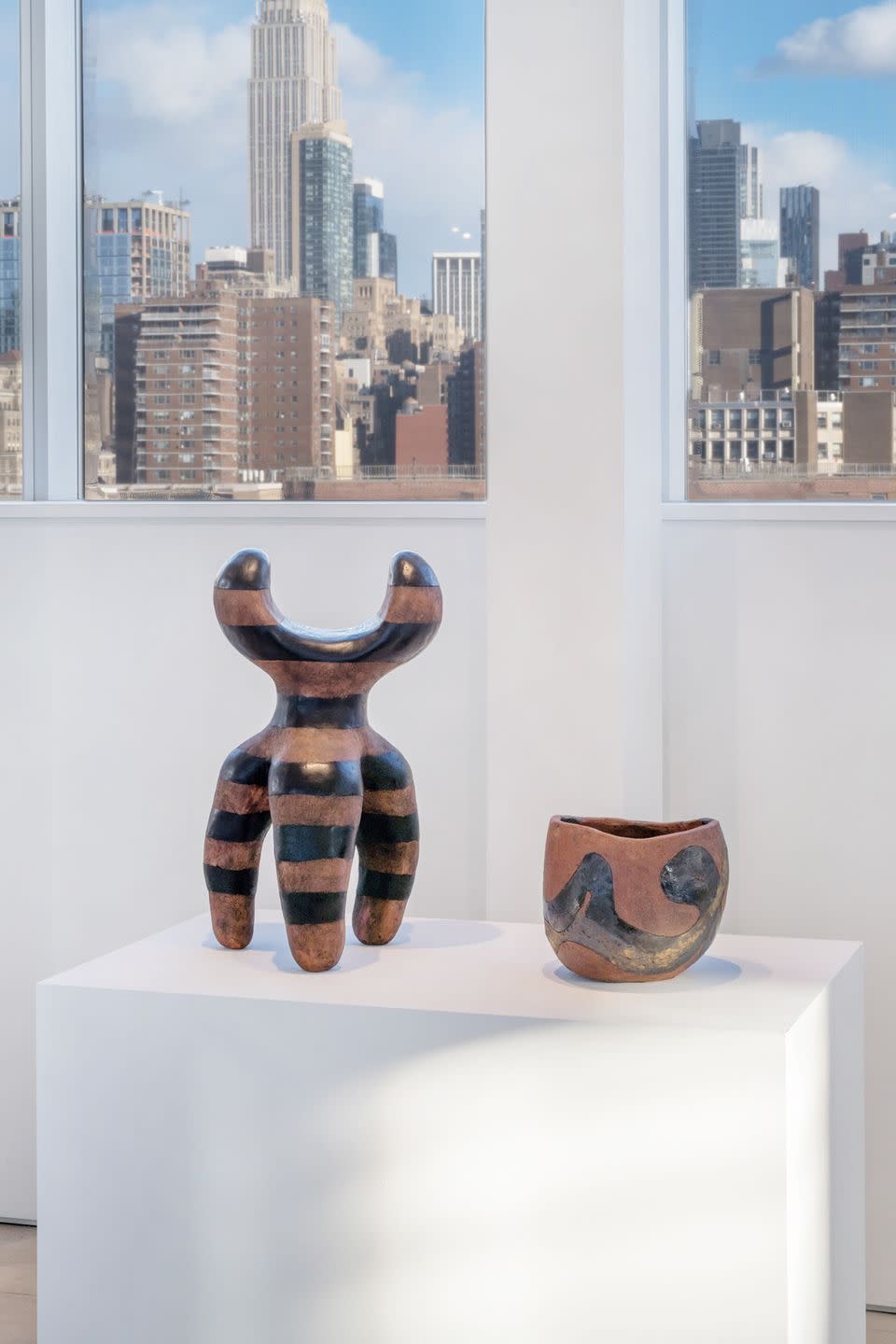
That changed when New York’s Davidson Gallery signed the Mary Ann Unger Estate. Last month Davidson devoted its space in Chelsea to Eve and Unger’s first mother-daughter gallery show. Sculptures, ceramics, and works on paper were exhibited side by side, leaving visitors guessing which was whose. The exhibition contextualized and contrasted each artist’s practice, exploring the impact of Eve’s birth on her mother and Unger’s death on Eve.
When Unger died, the New York Times’s Roberta Smith wrote the obituary, which Geoffrey describes in his upcoming photographic memoir, Rock in a Landslide, as not just “the best review she’d ever had” but also the “serious consideration Mary Ann had craved” during her lifetime. Geoffrey’s photos in the new book—a side project started amid a career of commissions and teaching—may turn out to be his masterpiece. Unger’s importance is clearer for having been documented by her husband, and his book reads as much as a love story about family and parenthood as about the artistic life.
Eve has brought to bear many of the lessons of her parents’ lives as artists. She co-directs the Wassaic Project, an artist-run art community she helped found in New York’s Dutchess County where she and her husband, the artist Joshua Frankel, are raising their two children.
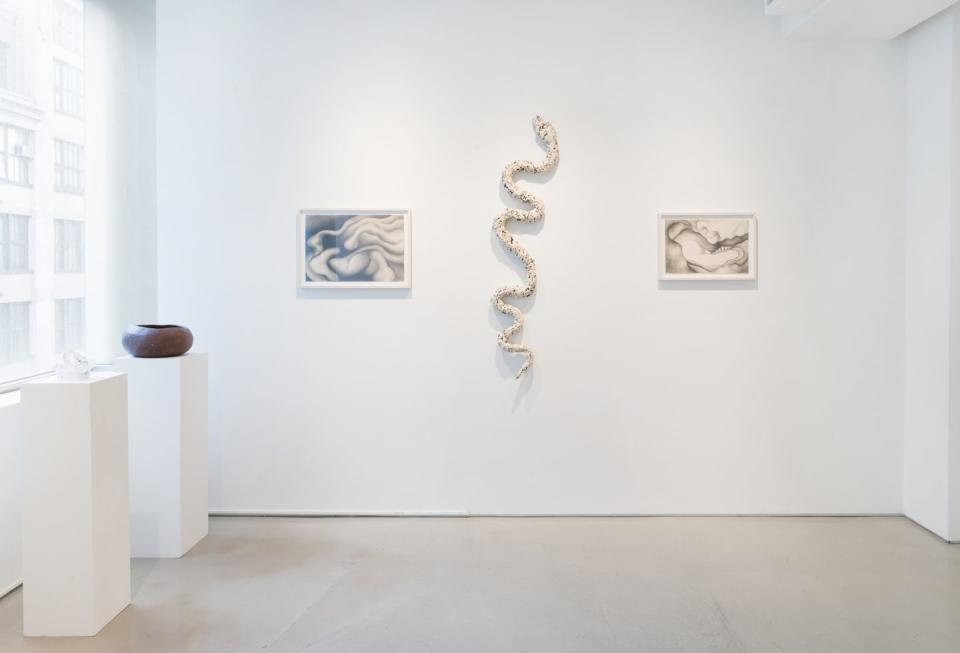
Geoffrey is remarried and has three daughters with Jane Gottesman, an author and publisher who Eve notes is “exceptionally kind and thoughtful” and without whose support, Eve points out, the family’s achievements on Mary Ann’s behalf would have been “impossible.”
Eve refers to Gottesman as “my bonus mom” and is close with her younger sisters. The whole family shows up at the celebratory events of the Mary Ann Unger Estate, and Gottesman is the publisher of Geoffrey’s memoir.
It could have gone another way, as such new family constellations often do, Eve remarks, looking up at a photo by Geoffrey of herself as a toddler dwarfed by Mary Ann’s sculptures all around her. “But the tone of our family culture,” she says, smiling, “is additionality.”
This story appears in the March 2023 issue of Town & Country. SUBSCRIBE NOW
You Might Also Like

